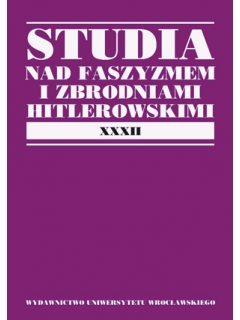

Artykuły

MEXICAN SYNARCHISM 1931–2009: ORIGINS, HISTORY, DOCTRINE. PART 2 1945–2009
The second part of historical-and-doctrinal study devoted to National Synarchist Union UNS; Unión Nacional Sinarquista in Mexico discusses in parallel both factions of this movement which came into existence after UNS’ breakup at the end of 1944. The specific feature of the first of these currents, commonly called independent independiente synarchism or – from the initials of its first leader jefe Manuel Torres Bueno – UNS-MTB, was an effort to transform hitherto civic-and-social movement into a political party which was supposed to participate in the election process. It was not a simple endeavor due to certain provisions of Electoral Code which were restrictive towards Catholics. Using legal pretexts the authorities did not permit the registration of religious political parties for a long time; they also often delegalized already registered parties. It was not until so-called “democratic openness” apertura democratica in the Seventies that Mexican Democratic Party PDM; Partido Demócrata Mexicano, created by this faction of UNS, came relatively close to being a permanent fixture in the panorama of official political life. Persistent attempts on the part of some members of UNS-MTB to build a party structure ultimately resulted in the establishment – in the year 2008 – of Solidarity Party PS; Partido Solidaritat. These actions, however, evoked strong internal tension and crisis in synarchistic movement: activists supporting civic-and-social orientation proposed alternative vision of movement remaining outside political system the goal of which was to allow the Mexican people to regain their sovereignty and cultural identity and to build participative participative and communitarian comunitaria version of democracy. The characteristic feature of the second current, commonly called dissident disidente synarchism or-again from the initials of its first leader Carlos Athié Carasco – UNS CAC, was an attempt to continuously adhere to ideological deposit modified as little as possible of “historic” synarchism, and particularly to its social, national and religious “mystique”. Such attitude made this faction a sort of “soldier-monks order”. This faction also came under the influence of covert Catholic organization, founded in 1955 according to other sources – in 1953 under the name of El Yunque “anvil” in Spanish by a group of students of the Autonomous University in Puebla whose leader was Ramón Plata Moreno 1935–1979. The name El Yunque, which alluded to words spoken by martyred bishop Saint Ignatius from Antioch “Be unbending like anvil hit by hammer”, Sta firmus ut incus, quae percutitur in Latin, expressed mystical-and-heroic ethos of the organization the declared purpose of which was to build a Catholic state or “God’s Kingdom on Earth” El reino de Dios en la Terra in Spanish in Mexico. The organization’s modus operandi was establishment of overt “façade structures” fachadas or membretes in Spanish and infiltration of its activists into various social movements, economic associations and political parties – particularly into the conservative Party of National Action PAN; Partido Acción Nacional. In the final part of the article the author analyzes the political situation in Mexico from the year 2000 when PAN, for the first time in history, achieved power. The disclosure of the fact that in governments of both consecutive Catholic Presidents V. Fox Quesada and F. Calderón Hinojosa, in federal Parliament and in regional state structures there were many former or present members of El Yunque caused a hot and intense debate in which the voice of lay Left, warning against “clerical-and-fascist dictatorship”, appeared dominant.